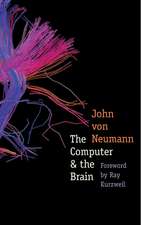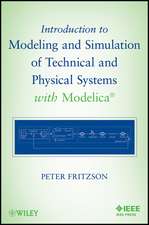Rubber Processing and Production Organization
Autor P.K. Freakleyen Limba Engleză Paperback – 30 sep 2011
Preț: 642.46 lei
Preț vechi: 755.84 lei
-15% Nou
Puncte Express: 964
Preț estimativ în valută:
122.93€ • 128.35$ • 101.74£
122.93€ • 128.35$ • 101.74£
Carte tipărită la comandă
Livrare economică 04-18 aprilie
Preluare comenzi: 021 569.72.76
Specificații
ISBN-13: 9781461294528
ISBN-10: 1461294525
Pagini: 476
Ilustrații: 470 p.
Dimensiuni: 152 x 229 x 25 mm
Greutate: 0.63 kg
Ediția:Softcover reprint of the original 1st ed. 1985
Editura: Springer Us
Colecția Springer
Locul publicării:New York, NY, United States
ISBN-10: 1461294525
Pagini: 476
Ilustrații: 470 p.
Dimensiuni: 152 x 229 x 25 mm
Greutate: 0.63 kg
Ediția:Softcover reprint of the original 1st ed. 1985
Editura: Springer Us
Colecția Springer
Locul publicării:New York, NY, United States
Public țintă
ResearchCuprins
1. Rubber Product Manufacturing Systems.- 1.1. Introduction.- 1.2. The Systems Concept.- 1.3. The Selection and Operation of Tests for Unvulcanized Rubber.- 1.4. The Prediction, Monitoring, and Control of Process Performance.- 1.5. Production Organization.- References.- 2. Materials Behavior and Testing.- 2.1. Introduction.- 2.2. Flow Properties of Raw Elastomers and Rubber Mixes.- 2.3. Measurement of Flow Properties.- 2.4. Thermal and Heat-Transfer Properties.- 2.5. Vulcanization Characteristics.- References.- 3. Principles of Mixing and Internal Mixers.- 3.1. Introduction.- 3.2. The Mechanisms of Mixing.- 3.3. Elements of Internal Mixer Design.- 3.4. Practical Mixing Variables.- 3.5. Flow Instabilities.- 3.6. Laboratory Simulation of Full-Scale Mixing.- References.- 4. Screw Extrusion and Continuous Mixing.- 4.1. Introduction.- 4.2. Elements of Extruder Construction.- 4.3. Hot-Feed Extruders.- 4.4. Cold-Feed Extruders.- 4.5. Design of Extruder Heads and Dies.- 4.6. Determination and Control of Extruder Operating Characteristics.- 4.7. Continuous Mixing.- References.- 5. Calendering and Milling.- 5.1. Introduction.- 5.2. The Operating Characteristics of Two-Roll Mills.- 5.3. Mill and Calender Roll Temperature Control.- 5.4. Calender Configurations and Operations.- 5.5. Roll Deflection and Methods of Correction.- 5.6. Feeding, Sheet Cooling, and Batch-Off Equipment.- 5.7. Determination and Control of Calender Operation Characteristics.- References.- 6. Heat Transfer and Vulcanization Methods.- 6.1. Introduction.- 6.2. Heat Transfer.- 6.3. Prediction of State of Cure.- 6.4. Molding.- 6.5. Batch Vulcanization.- 6.6. Continuous Vulcanization.- References.- 7. Process Control and Quality Control.- 7.1. The Interaction of Process Control and Quality Control.- 7.2. Specifications.- 7.3. Process-Capability Studies.- 7.4. Process Monitoring.- 7.5. Process Control.- 7.6. Quality Control.- References.- 8. Plant Layout and Operations Methods.- 8.1. General Considerations.- 8.2. Transport and Storage in Manufacture.- 8.3. Handling Methods and Operations at Work Stations.- 8.4. Planning and Allocating Space.- 8.5. Layout Synthesis and Evaluation.- 8.6. Installing and Commissioning a Layout.- References.- 9. Company Philosophy, Organization, and Strategy.- 9.1. Philosophy.- 9.2. Company Organization.- 9.3. Market Research and Company Development.- References.- 10. The Economics of Manufacturing Operations.- 10.1. The Flow of Cash Through a Company.- 10.2. Cost Identification and Analysis Methods.- 10.3. Standard Costs.- 10.4. Business Plans and Budgets.- 10.5. Budgetary Control.- References.- 11. Production Management.- 11.1. Production Planning.- 11.2. Purchasing and Inventory Control.- 11.3. Implementing the Production Plan.- References.











